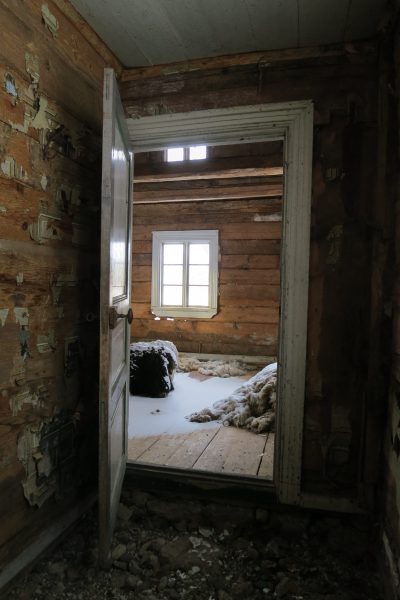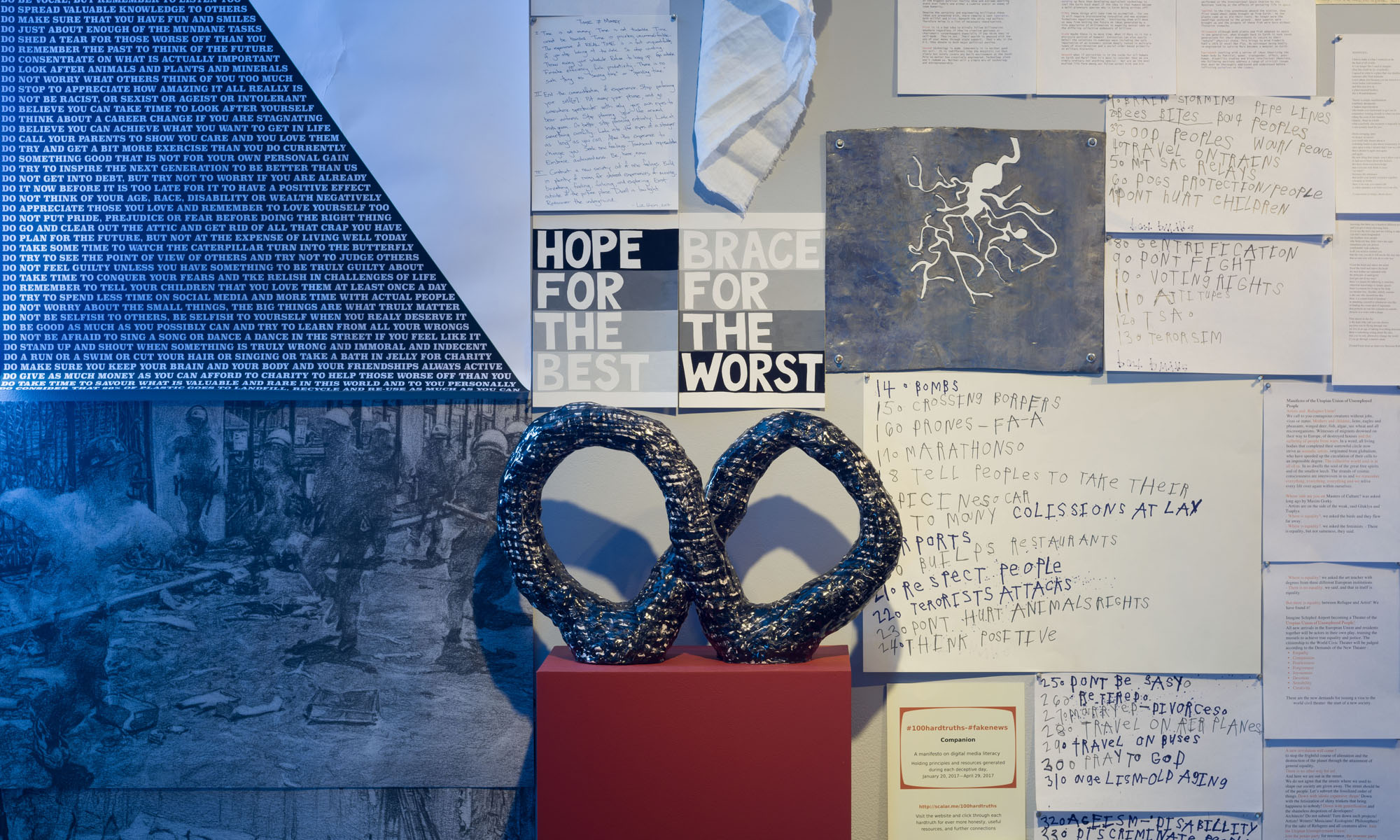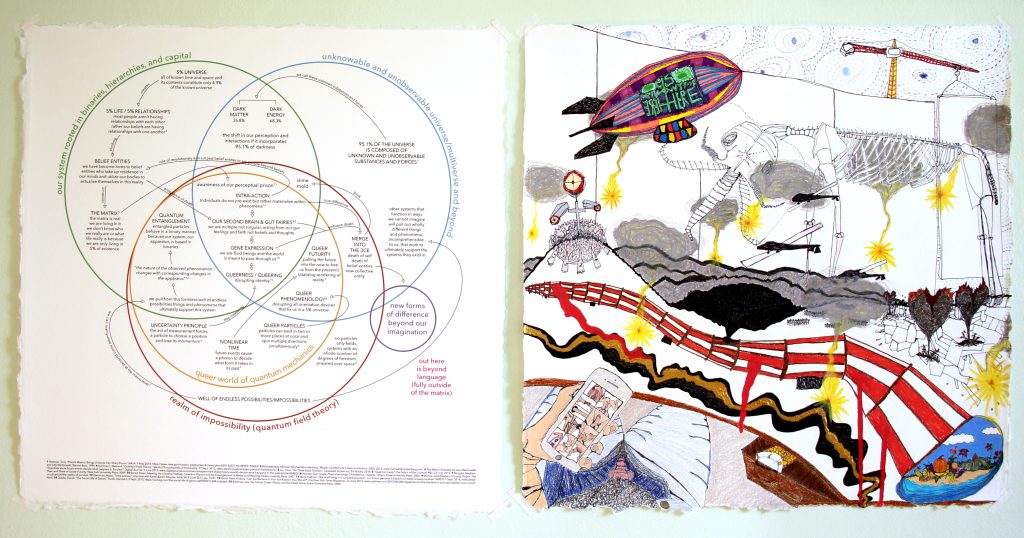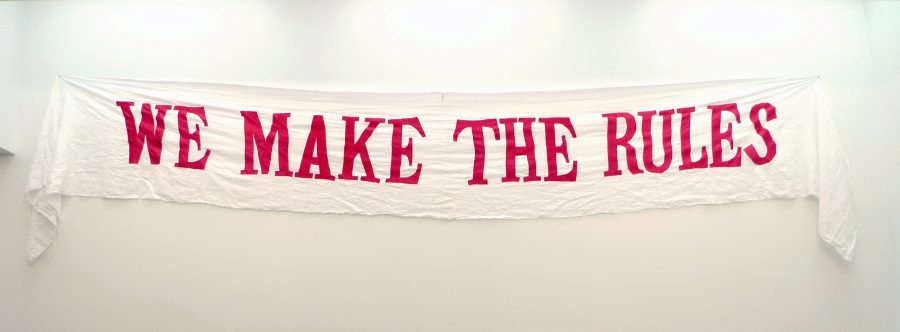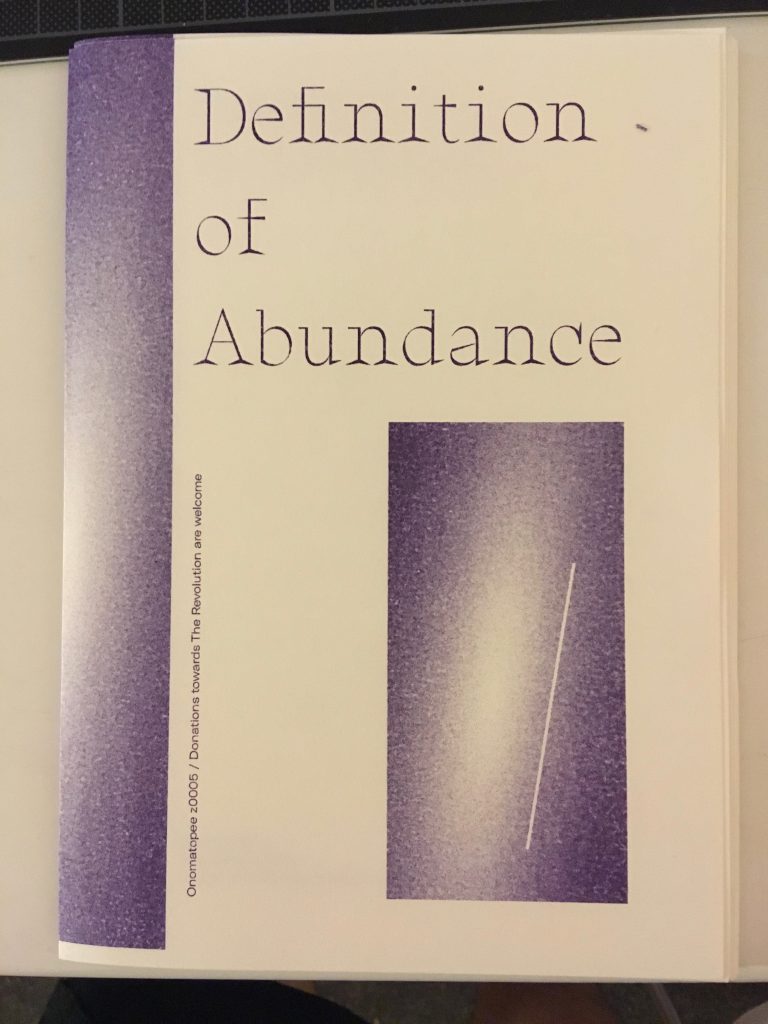
Jennifer Moon & Laub
Jen Smith
Jenny Perlin
All the decisive blows are struck left-handed (2017)
“Silences and repetitions are rejected as a failure of language when they are experienced as oblivious holes or as the utterance of the same thing twice or more. WE SHOULD NOT STAMMER, so goes the reasoning, for we only make our way successfully in life when we speak in a continuous articulate flow. True. After many years of confusions, of suppressed voice and INARTICULATE SOUNDS, holes, blanks, black-outs, jump-cuts, out-of-focus visions, I FINALLY SAY NO: yes, sounds are sounds and should above all be released as sounds. Everything is in the releasing. There is no score to follow, no hidden dimension from the visuals to disclose, and endless thread to weave anew.”
–Trinh T. Minh-Ha
“Holes in the Sound Wall”
from When the Moon Waxes Red: Representation, Gender, and Cultural Politics
Routledge, New York, 1991
—
“We must acknowledge that we began [in cinema] like literary people, that we’re not sufficiently literate in existing sounds and don’t distinguish among them. If […] you go to the Donbass, then all you’ll hear [at first] is one uninterrupted roar and noise—that’s the first impression. But this wasn’t my first time in the Donbass; I studied these sounds and saw that, yes, we really are domestic, and for us these sounds are “noise”—but for the worker in the Donbass every sound has a specific meaning; for him there are no “noises.” And if it seems to you, comrades, who know all the scales perfectly, that I am at this moment emitting pure noise, then I can assure you that I am [producing] no noise whatsoever.”
Dziga Vertov, spoken at the Kiev preview of “Enthusiasm”
RGALI f. 2091, op. 2, d 417, 1. 59
In John MacKay, “Disorganized Noise: Enthusiasmand the Ear of the Collective,”
Kinokultura # 7, January 2005
Accessed December 4, 2016 at
https://www.kinokultura.com/articles/jan05-mackay.html
—
“The optical thought the optical dance to the sound of the river of your soul The flowers of a mind The dance of handwriting and the song of flowers and the white of the clouds and the blue of the sky–Sometimes it is dark and you see in the darkness nothing but your own feeling your own movements your own pulse and the rapture of your heart your blood this is what you see–what goes with the music–The Stars the Heaven the Darkness and the Light of your own love your own heart The Light of your mind, The Dancing Light of your blood–and your feeling”
Oscar Fischinger
on Motion Painting No. 1
from Center for Visual Music’s Fischinger Texts: Film Notes
https://www.centerforvisualmusic.org/Fischinger/OFFilmnotes.htm
—
“CHINESE CURIOS
‘These are days when no one should rely unduly on his “competence.” Strength lies in improvisation. All the decisive blows are struck left-handed.’”
–Walter Benjamin
from One-Way Street and other Writings
NLB, London, 1979
Jenny Yurshansky
This work was created in the days just before Barack Obama was first elected as president. At the time there seemed to be a belief that we had come to embody all that was asked of us by Dr. Martin Luther King in his iconic ‘I Have a Dream’ speech. Instead of offering King’s inspirational words, the piece empties those spaces they would normally occupy and makes visible only the punctuation marks that shaped these now famous sentences. It is the points of emphasis, exclamations, and pregnant pauses—in short King’s delivery and skill as an orator—that define the remarkable power and lasting poignancy of the speech, suggesting that the speech could have used different words, because it was King himself, who brought people together. The punctuation reminds us of the speech’s power, while the presentation reduces it to nothing more than rhetoric. The repeated absences on the nearly blank page evoke the impossibility of ever achieving what the words convey, be it for King’s generation or ours and instead we are invited to re-write and re-remember the dream.
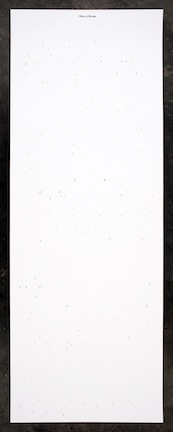
Jesse Lerner
Manifiesto de la emulsión (para Téo Hernández) (2018)
Pen on paper
1 1/4 x 8 ½ in.
Jessica McCoy
Embellished “Elle Décor” Spread with Harris and Llewyn (2017), Collage, marker and paint on paper, 12 x 12 in.
A manifesto is of primary importance to the person who issues it, and of almost no importance to anyone else. An artist’s manifesto is a rabbit hole of obsession and urgency, fueled by self-justification, as is the edict of motherhood. The burden of living and generating according to one’s manifesto is akin to the burden of ideal motherhood. I wanted to construct a perfect space for my children to play. I have found a beautifully designed landscape, a dream space, and punctuated it with coveted items and objects of my reality. You can make a declaration, but it will be tempered by contradictory desires, error, and laziness; the ideal is infiltrated by the actual.
Jessica Wimbley
Question of the white box (2017)
Pencil on wood
Tryptic: 10 x 8 in. each
I use the literary term biomythography, defined by poet Audre Lorde as a combination of “biography, myth, and history”, as an interdisciplinary visual arts practice. The figure in these narratives straddles both objectification and subjectification, as a result, creating narratives that conjure multiple histories through the codification of landscape, objects, and the body. Literary references to science fiction novels by Octavia Butler, as well as popular culture media are used to compose narrative, in conjunction with photographic digital, and printed images, painting and drawing. The hybridity of images in the work reflect the way in which one composes culture in the digital age, integrating gazes by reflecting the mass consumption and democracy of the internet. The finished work reflects historical artistic approaches of painting and drawing with Photoshop, collage and digital photography, itself becoming a hybrid.
Joe Parker
The Reconciliation Manifesto Recovering the Land Rebuilding the Economy by Arthur Manuel and Grand Chief Ronald Derrickson, Preface by Naomi Klein, Joe Parker’s book, return when done (2017)
Book
9 1/8 x 6 1/16 in.
Johanna Karlin
My manifesto consists of two parts. An exhibition text by curator Martin Schibli, and my picture of my Art space UNDANTAGET during the winter.
In the text Schibli asks himself how to move on when social criticism has become mainstream: “…How do we move on from here? One possibility is to let art be art…” “…It is perhaps from such places as UNDANTAGET that the new will be revealed … places where art is allowed to be discussed as art…” The exhibition in UNDANTAGET showed manifests by 25 artists.
UNDANTAGET (the Exception) is an old, half-decayed duplex situated on my farm on the eastern side of Öland, Sweden. At Undantaget I want to present art that deals with time, in the form of growth and dissolution, human processing and the course of nature. The farm is located in a village founded in the 16th century
